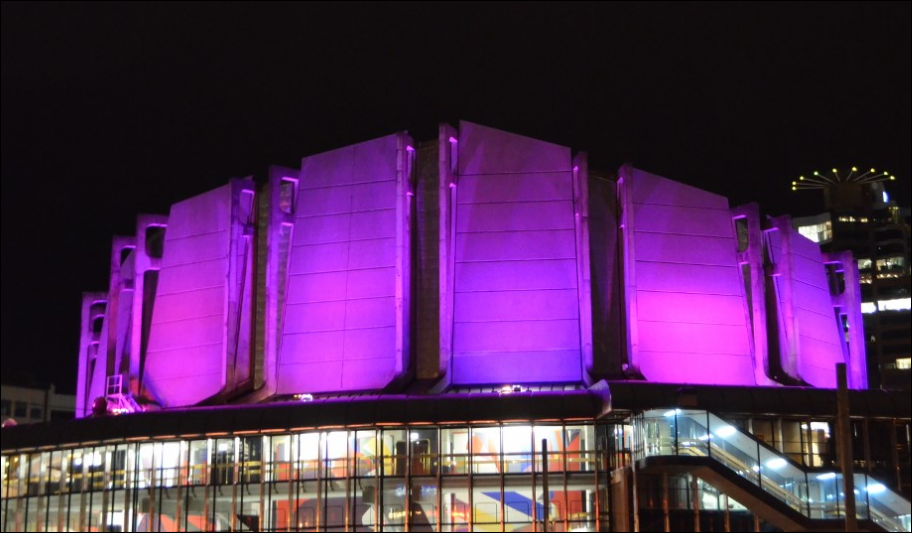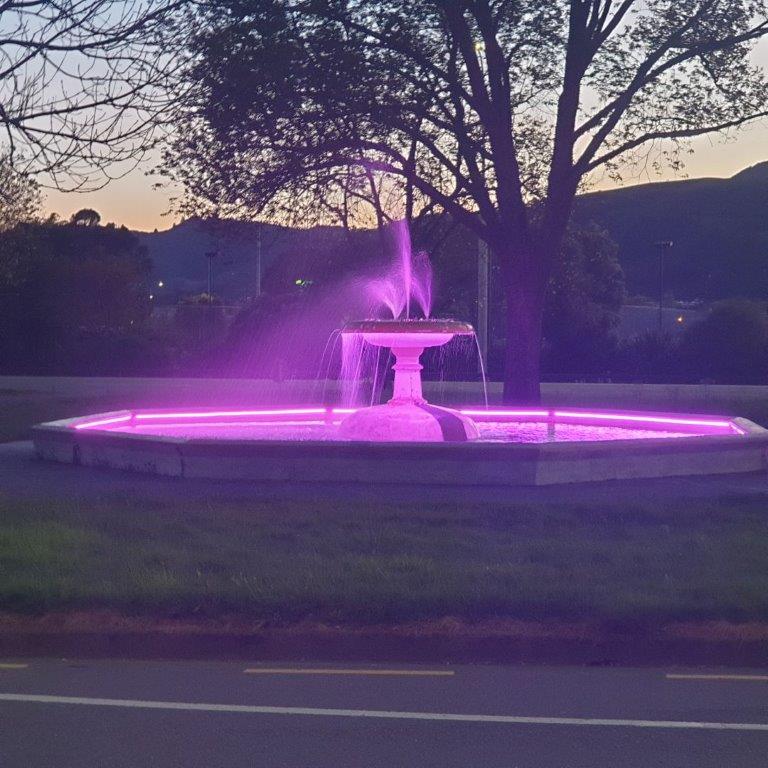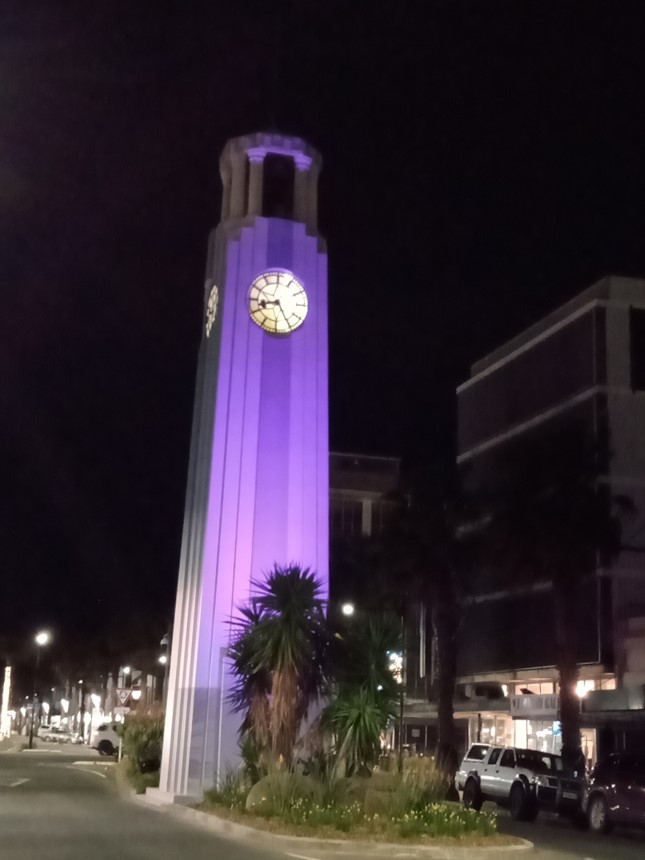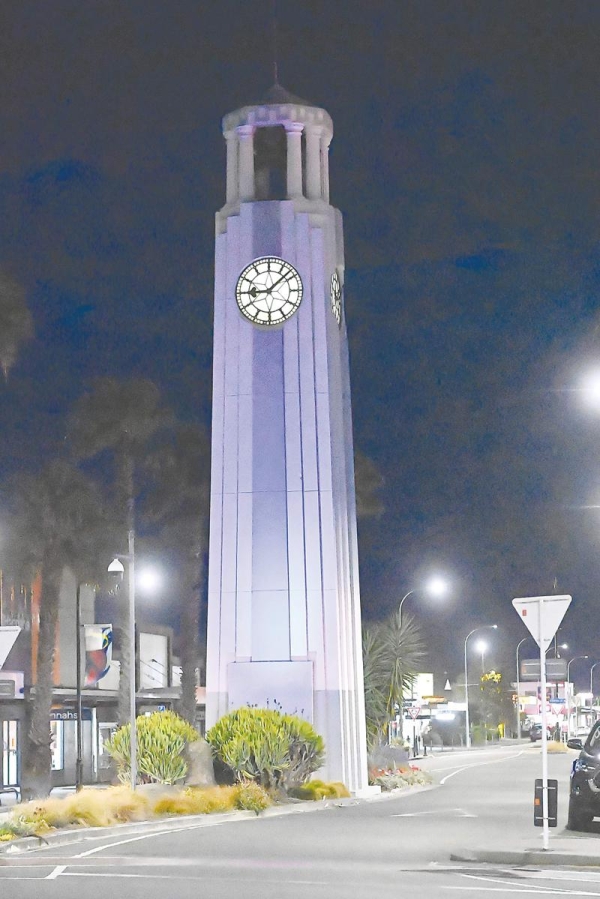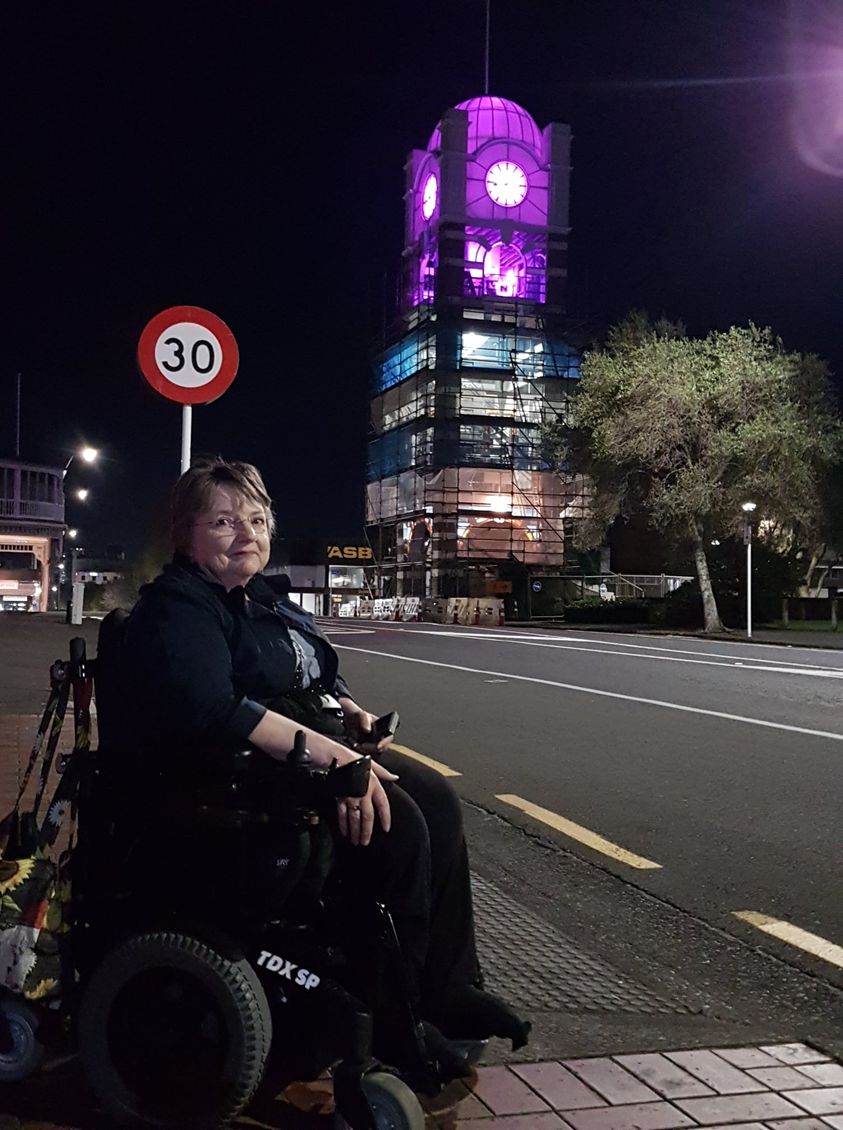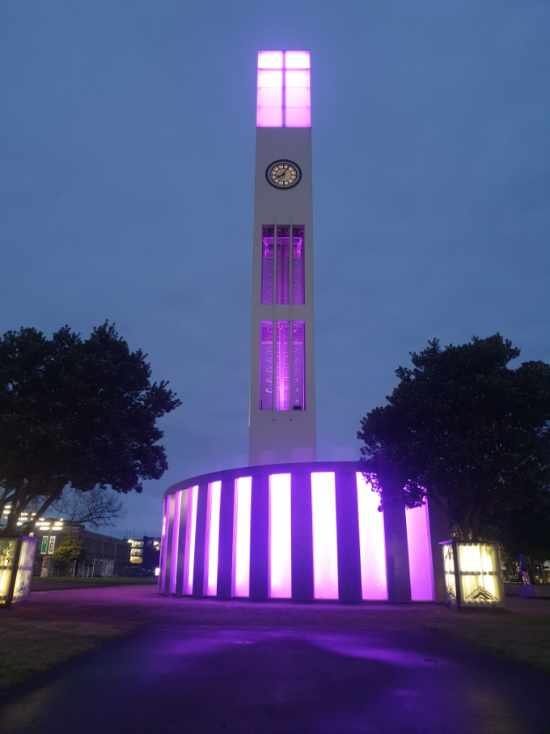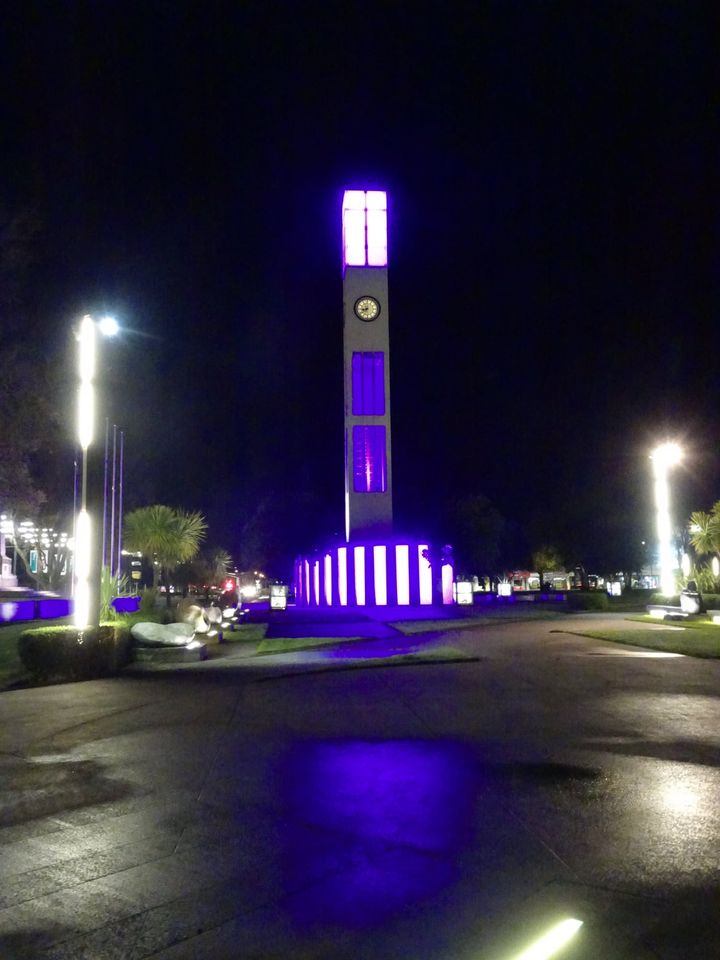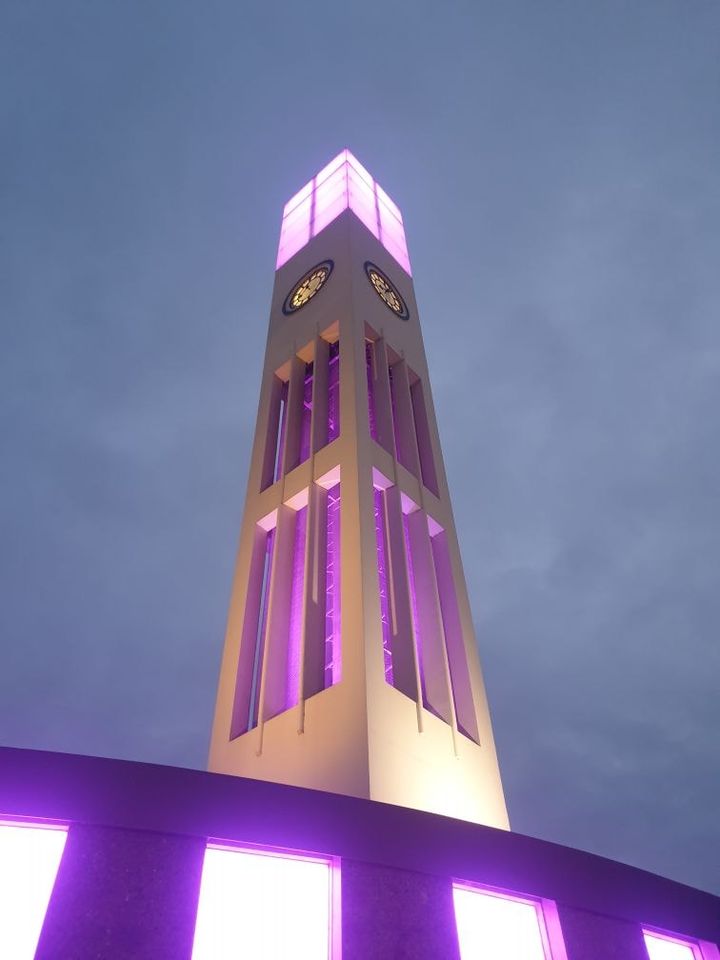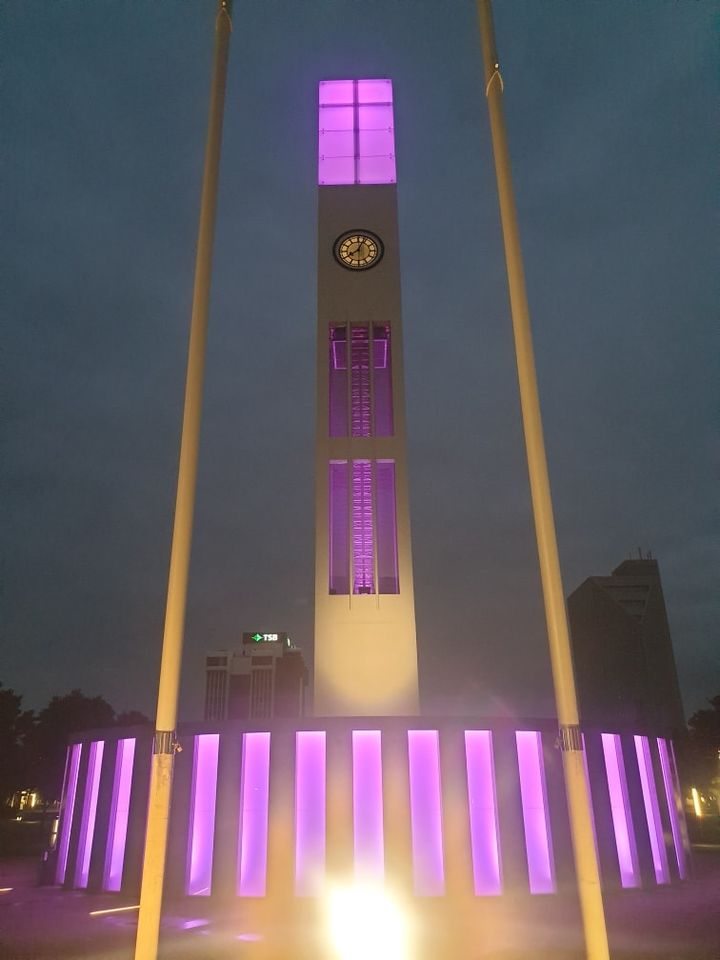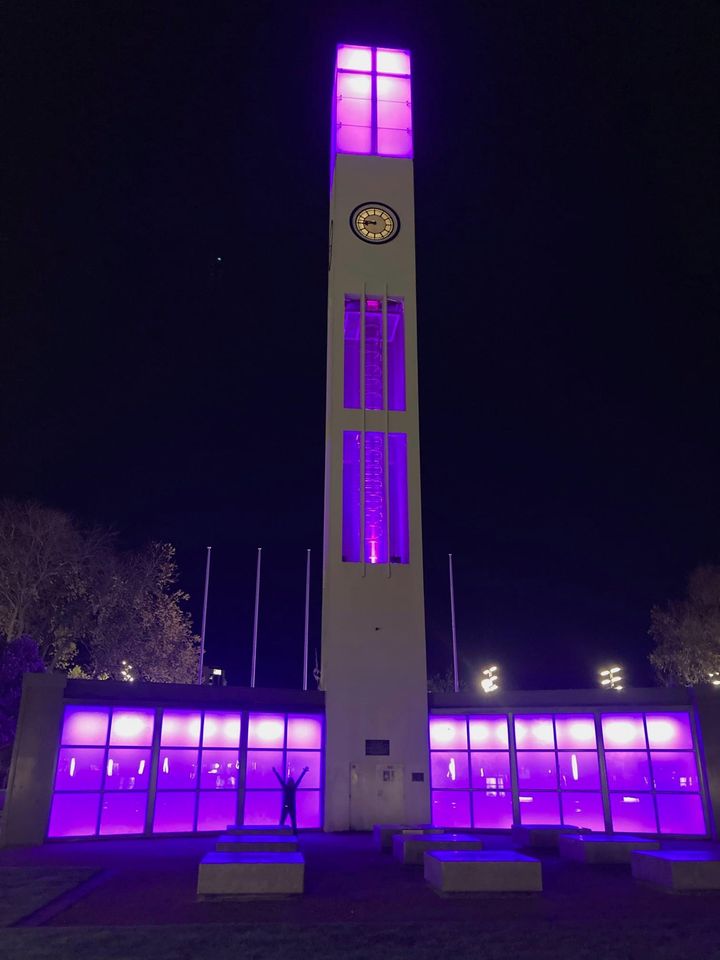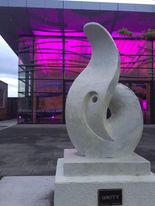Nelson Clock Face
Mollar Fountain Nelson
Nelson , World Polio Day 2020!
Gisborne Clock Tower - Go Tairawhiti!
City icons lit purple for World Polio Day Oct 24
A growing number of city icons around New Zealand will be lit purple to mark World Polio Day on October 24 to remember the more than 800 New Zealanders who died from the Poliomyelitis virus during the pandemics of the 1950s.
Infantile Paralysis, or Poliomyelitis epidemics broke out in New Zealand in 1916, 1925, 1927, 1937, 1948–49, 1952–53 and 1955–56. Until the arrival of effective vaccines in the late 1950s, Polio was a devastating virus as it particularly affected children, says Polio NZ Board member, Sue Griffin.
“During the global polio pandemics New Zealand alone recorded around 10,000 cases, and more than 800 deaths,” says Griffin. “Survivors often suffered from lifelong partial or complete paralysis of limbs or the entire body. In the worst cases, the lives of seriously paralysed patients could only be saved by long periods in a compression chamber or ‘iron lung’.”
In very similar circumstances to the current Covid-19 pandemic, a mass immunisation campaign starting in the late 1950s achieved a high population coverage and eliminated the polio virus from New Zealand.
“If Covid-19 has taught us anything, it is that we cannot forget how vulnerable we are as humans to viruses,” says Griffin who is a polio survivor herself. “Just like Covid, the Polio epidemics had a dramatic effect on the life of New Zealanders. Schools and public places were closed and those who caught it had to be isolated until they recovered.”
The colour purple has become associated with World Polio Day following the World Health Organisation practice in third world countries to dip of the little finger of vaccinated children in gentian violet as a system to ensure children were not missed, or given a double dose.
“Although Polio has been eradicated in New Zealand, survivors today are still struggling with the long-term effects known as Post-Polio Syndrome,” explains Griffin.
“The late effects of Polio are common – affecting perhaps as many as 50% of individuals who contracted Polio. They include associated pain in muscles, tendons, ligaments and joints. Depression is also common as everyday activities become harder to perform because of the depletion of the motor neuron pool leading to fatigue.”
The current list of city icons lighting up in purple is:
Hamilton’s ANZAC Bridge
The Christchurch Art Gallery
Dunedin – Public Art Gallery, Otago Museum, Toitu Museum
Carterton’s event centre
New Plymouth’s clock tower
Gisborne’s clock tower
Palmerston North’s clock tower
Upper Hutt’s fantail
Wellington’s Michael Fowler Centre
Nelson’s clock tower
These icons will join others around the globe in being lit purple that have included The Coliseum in Rome, The Houses of Parliament in London, the Sydney Opera House, Table Mountain in Durban, Culzean Castle in Scotland, and The Empire State building in New York.

Taranaki in Purple
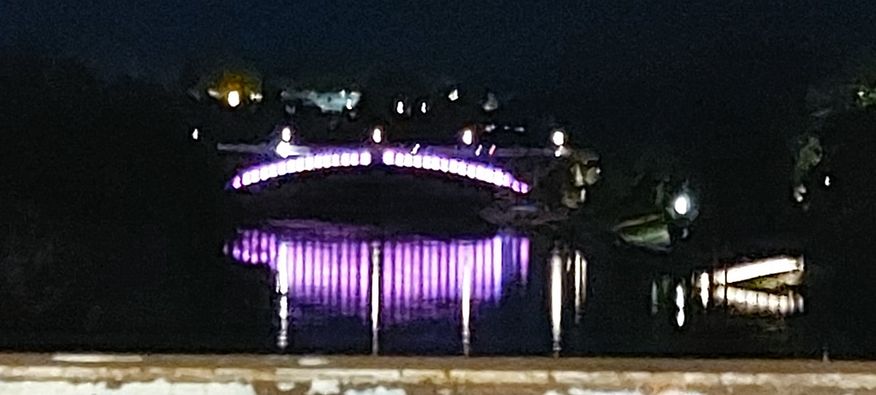
Hamilton ANZAC Bridge
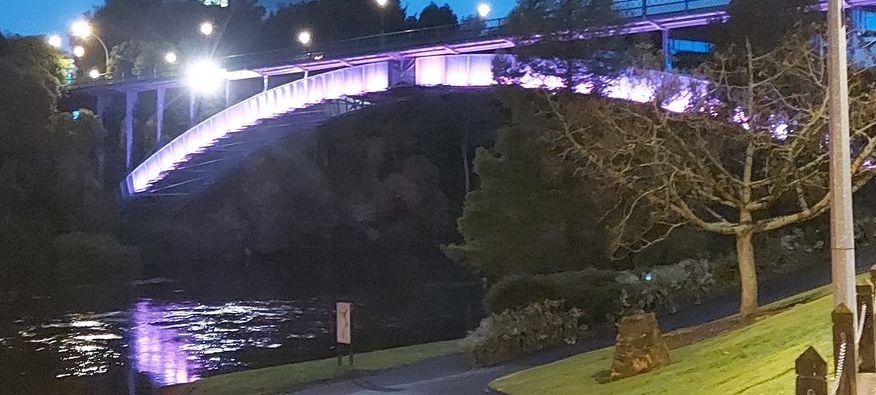
Hamilton ANZAC Bridge
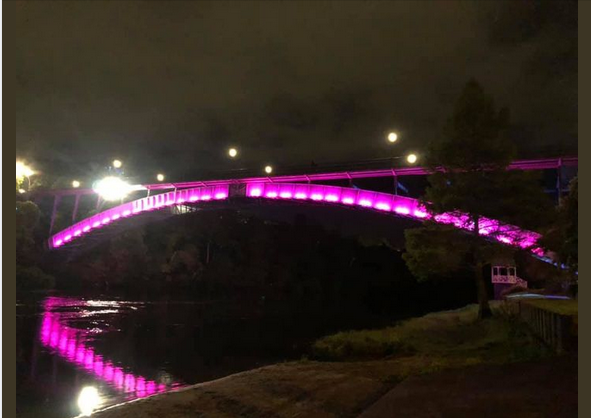
Hamilton ANZAC Bridge
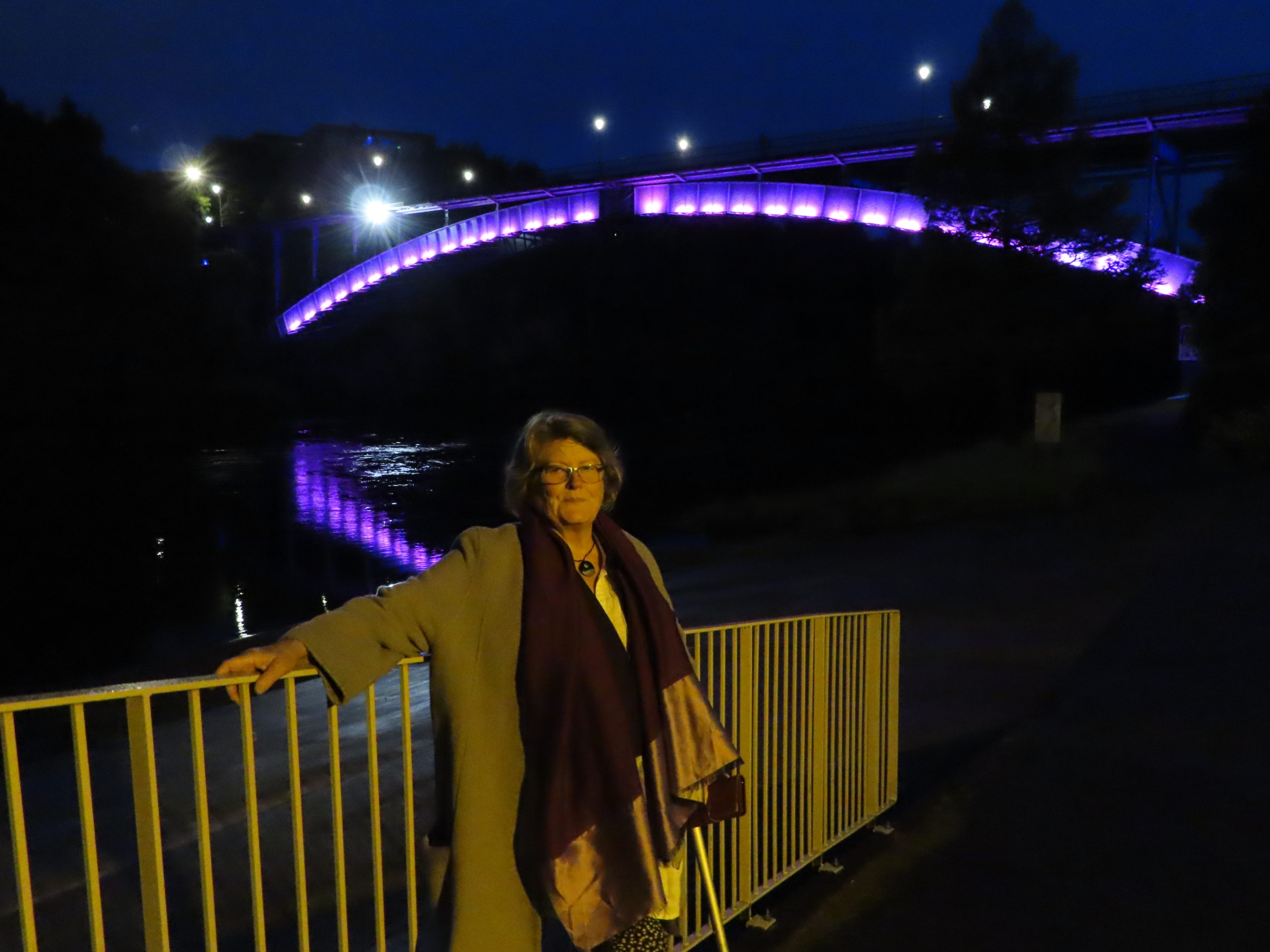
Sue Griffin and the Hamilton ANZAC Bridge
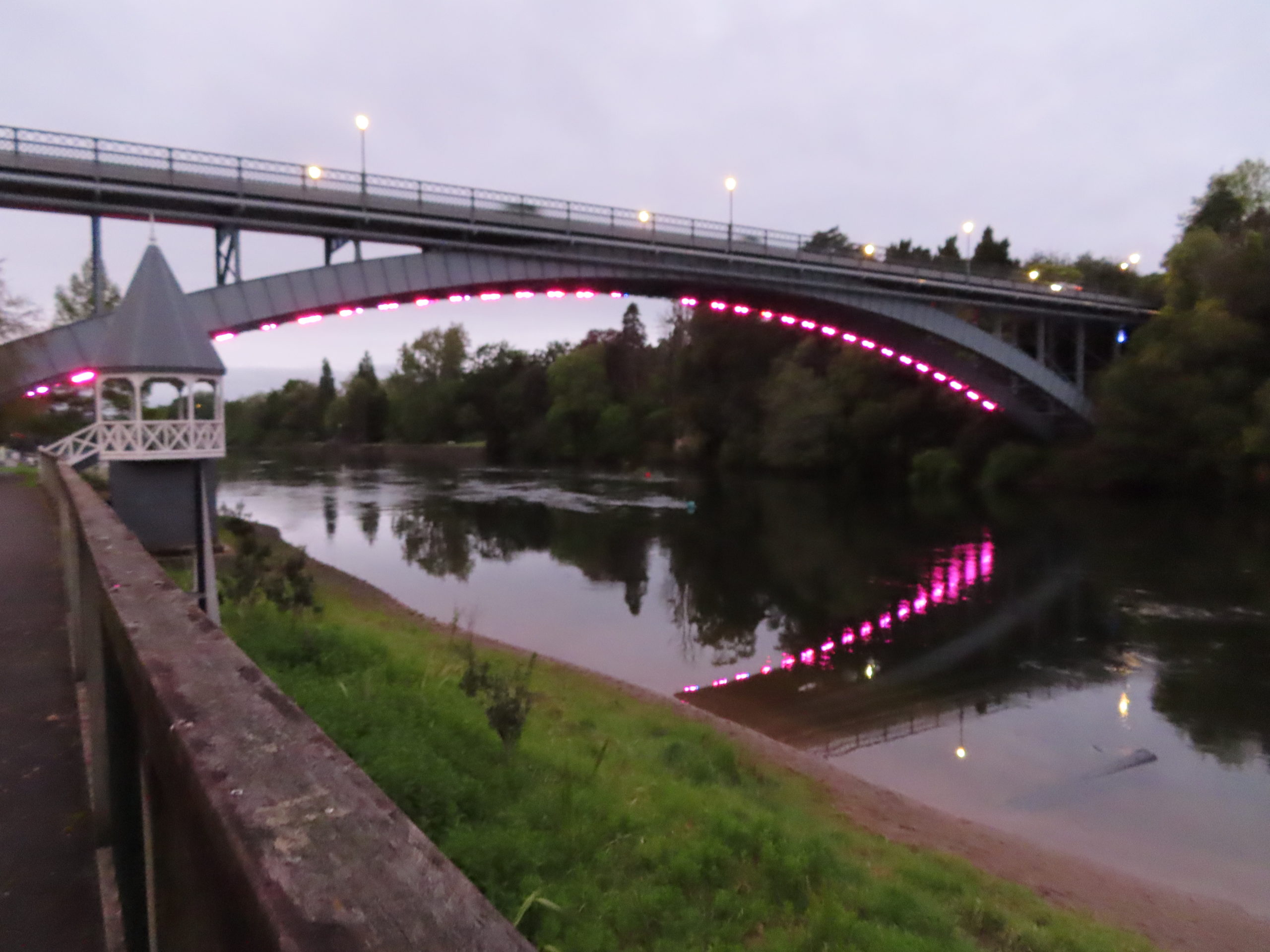
Hamilton ANZAC Bridge
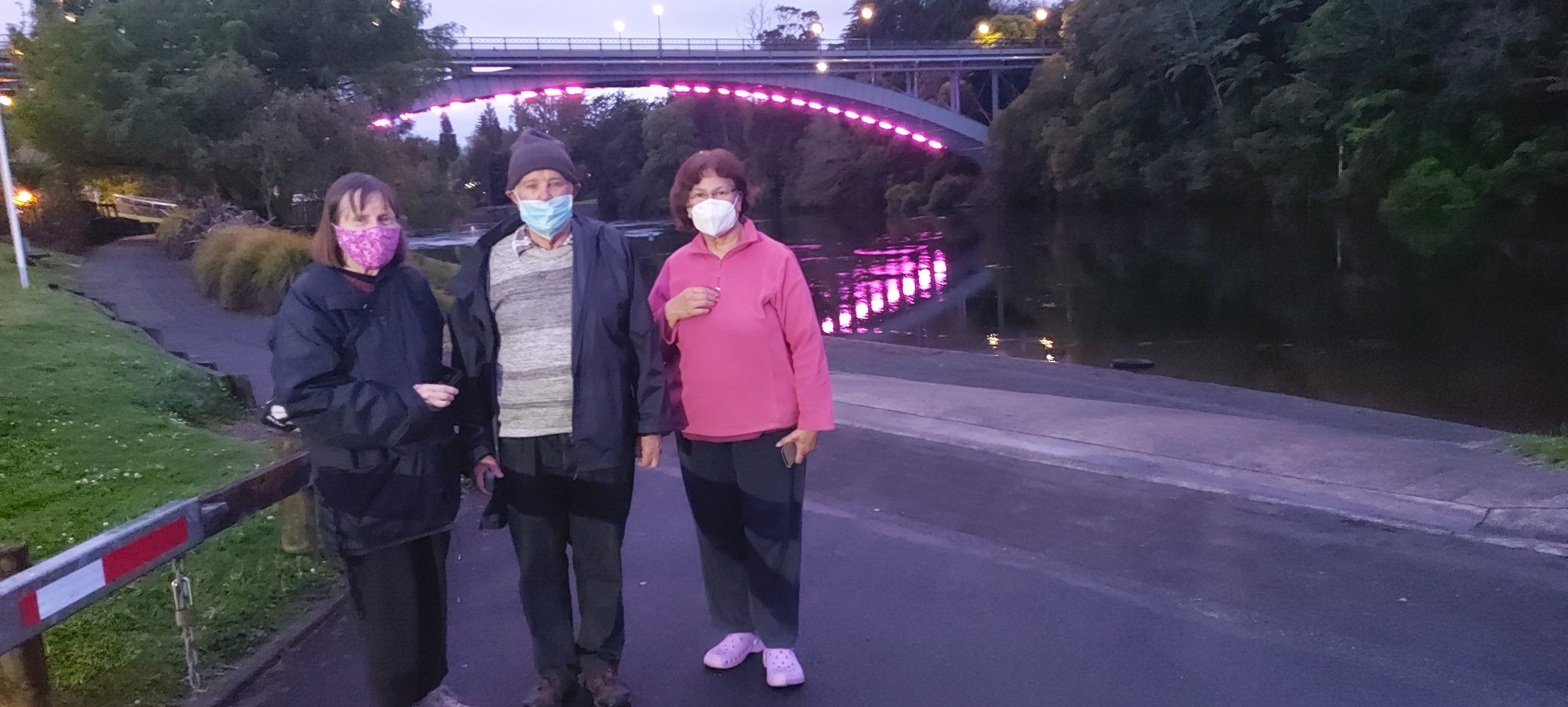
Hamilton ANZAC Bridge with Megan, Brusce and Jan
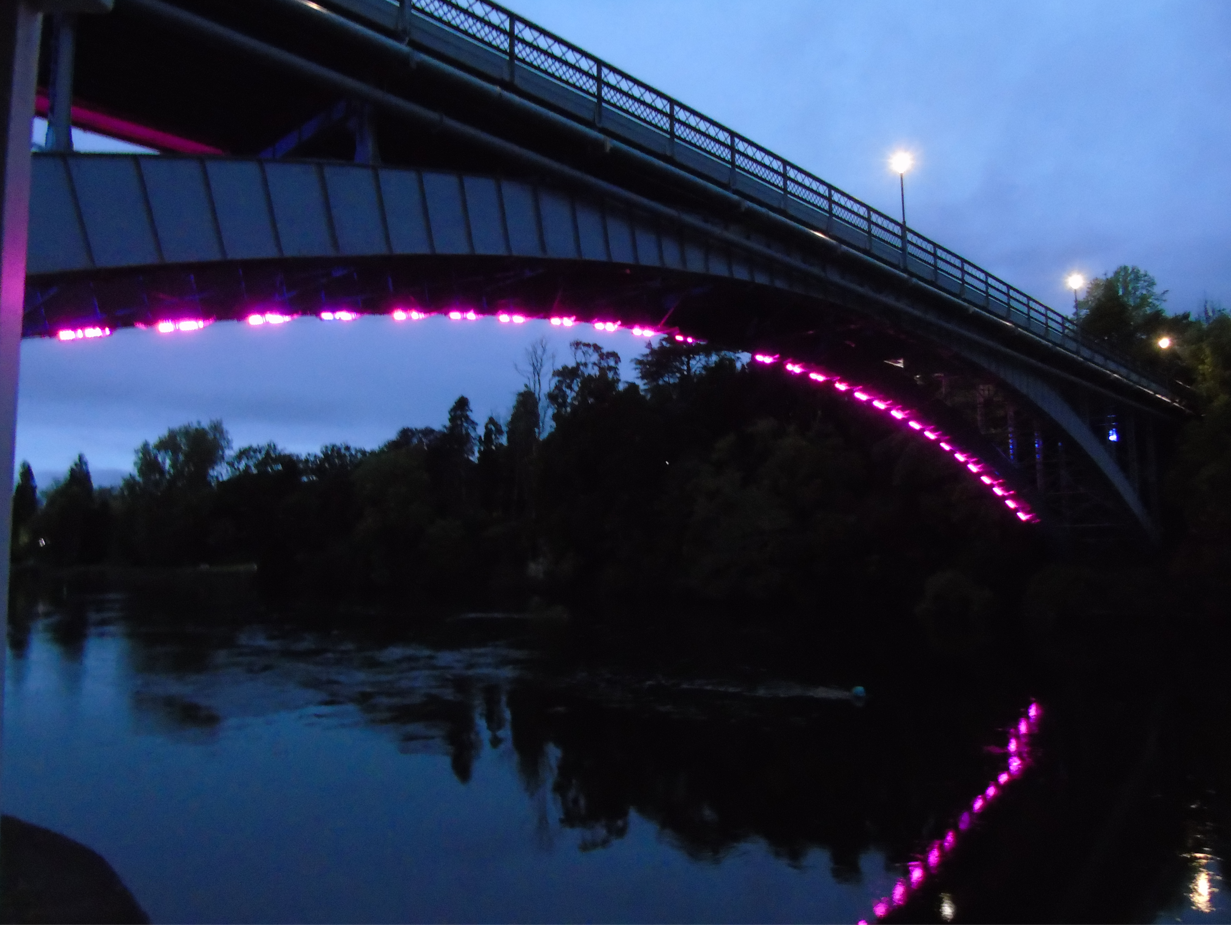
Hamilton Reflections
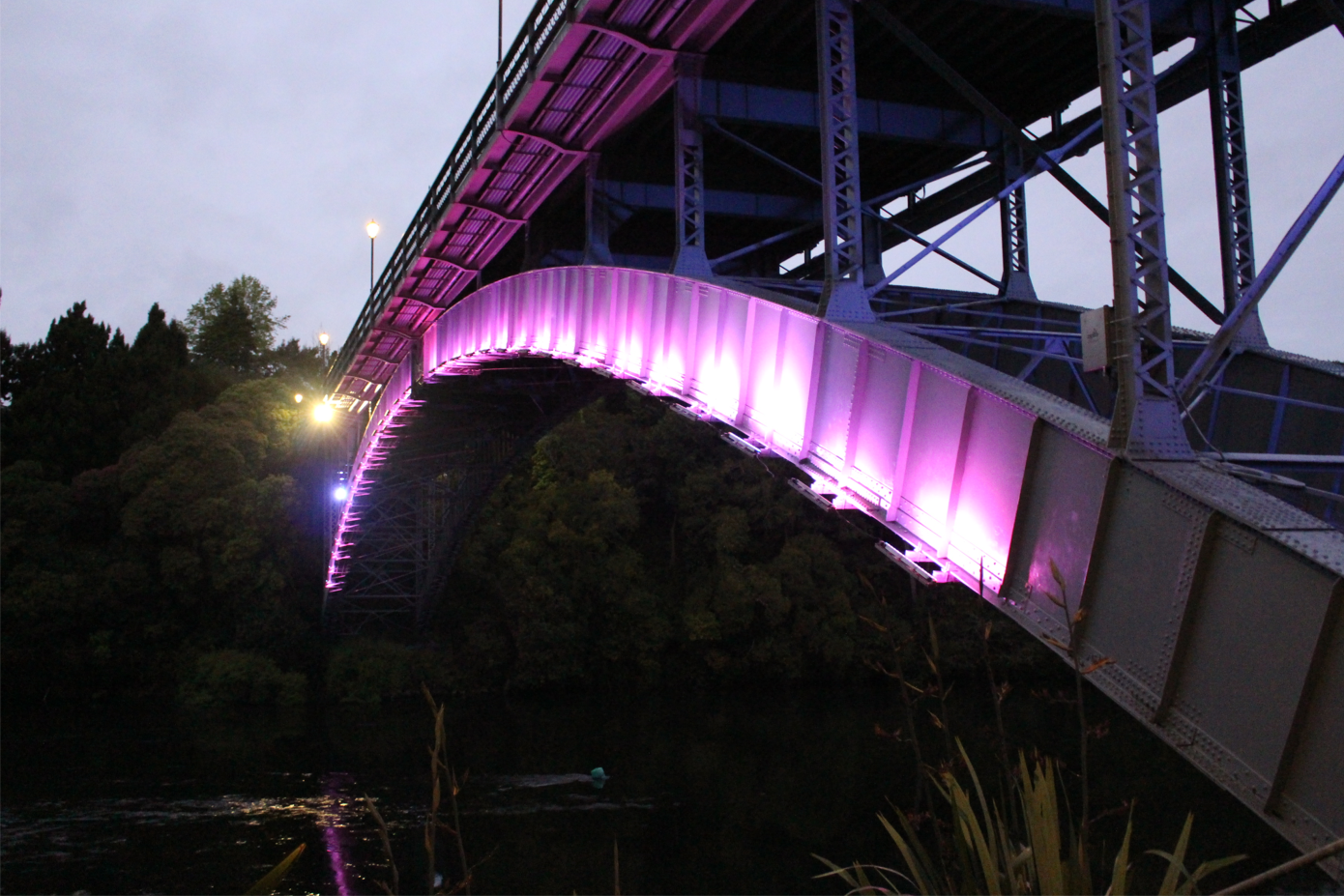
Hamilton ANZAC Bridge
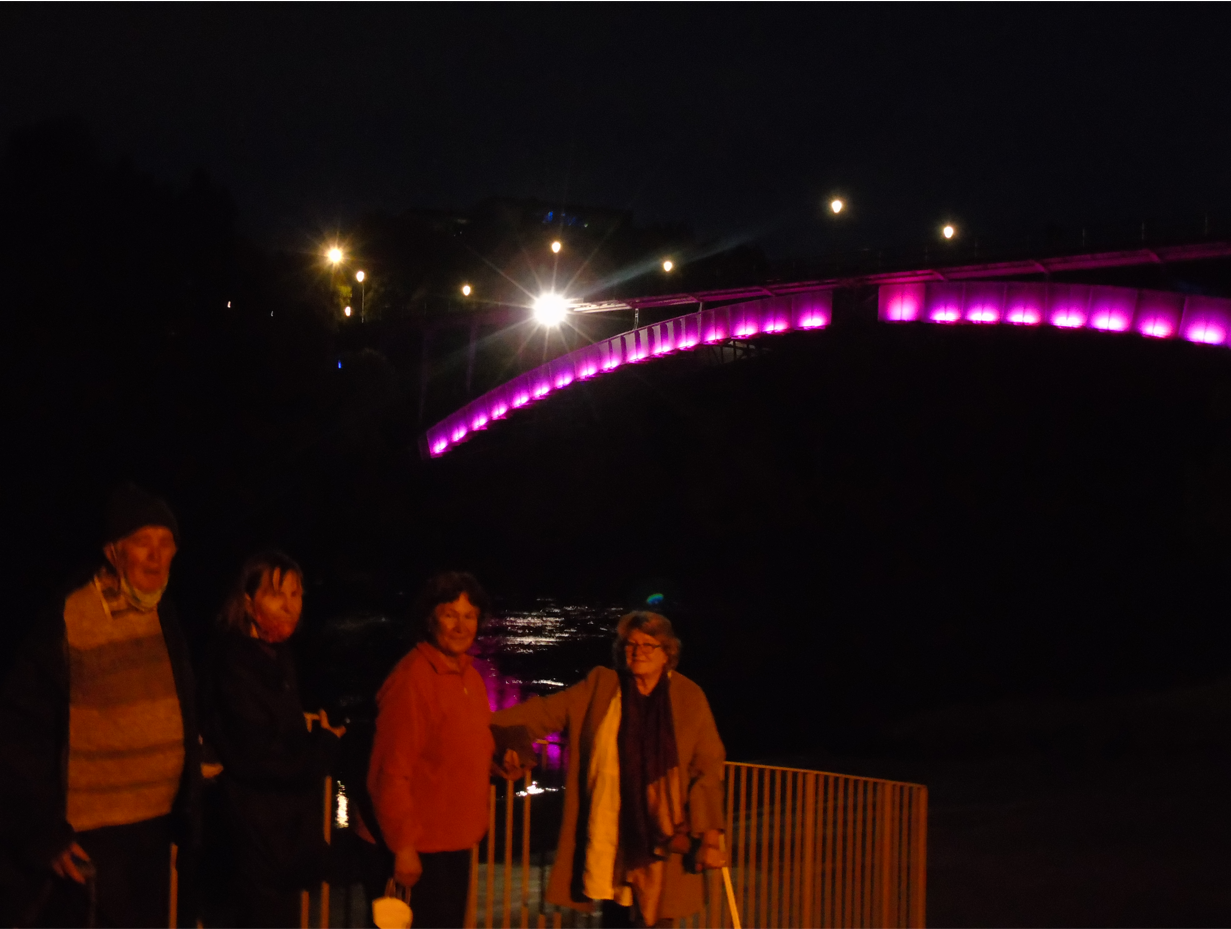
Brusce, Jan, Megan and Sue at the lights.
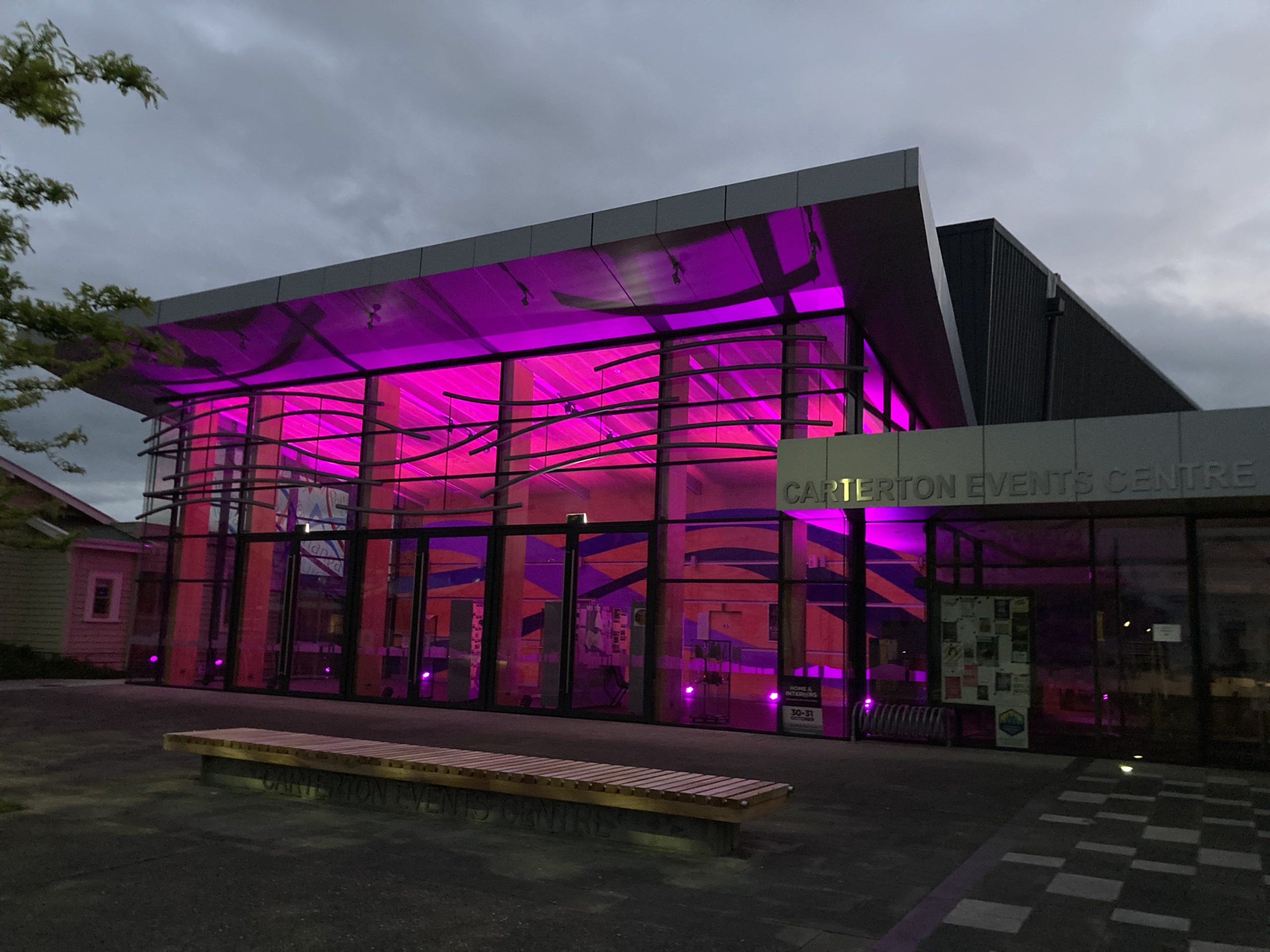
Carterton Events Centre - Photo Rose Taylor
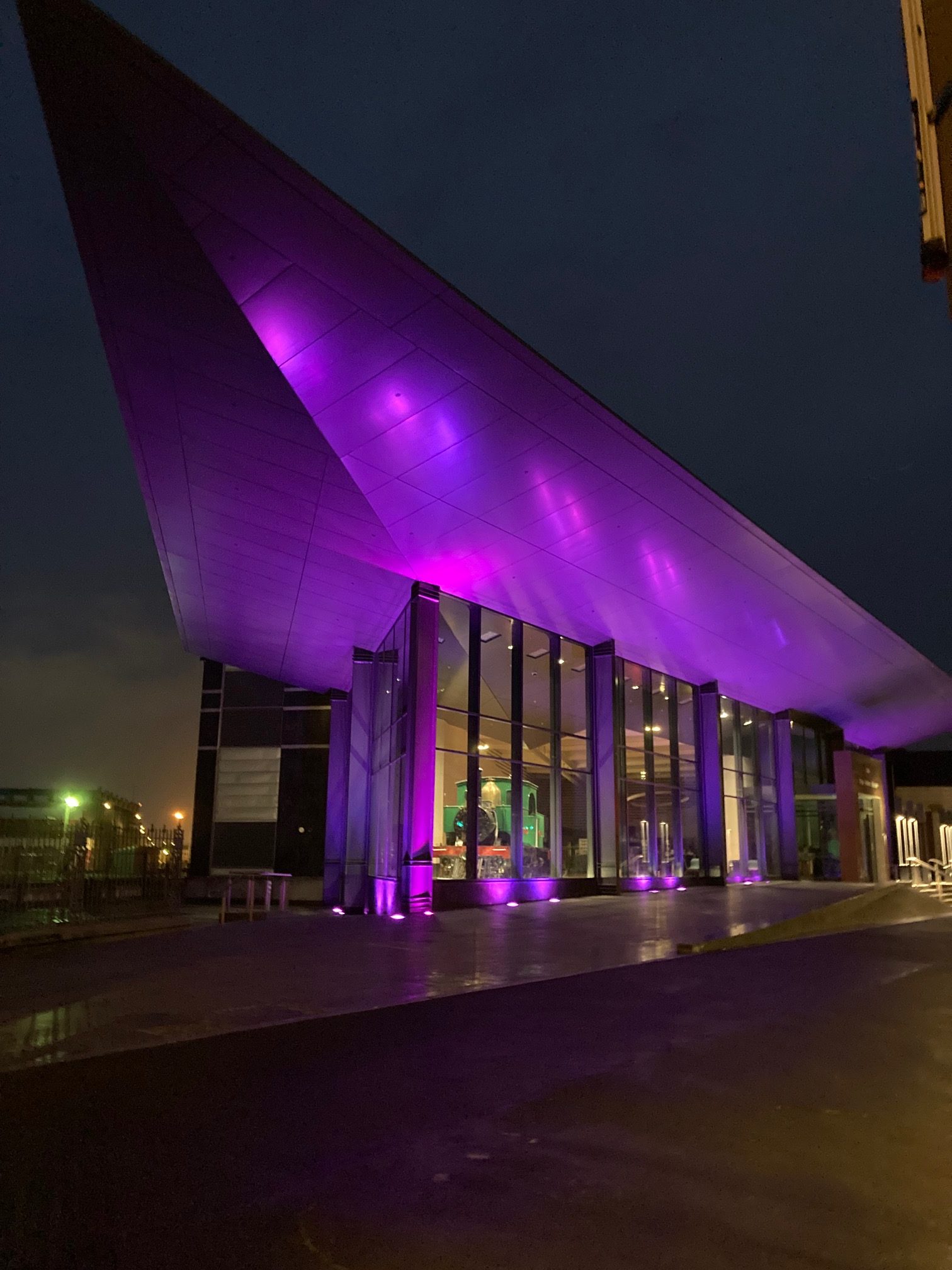
Toitu Museum Dunedin - Photo Jane Chetwynd
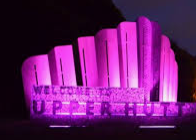
Upper Hutt
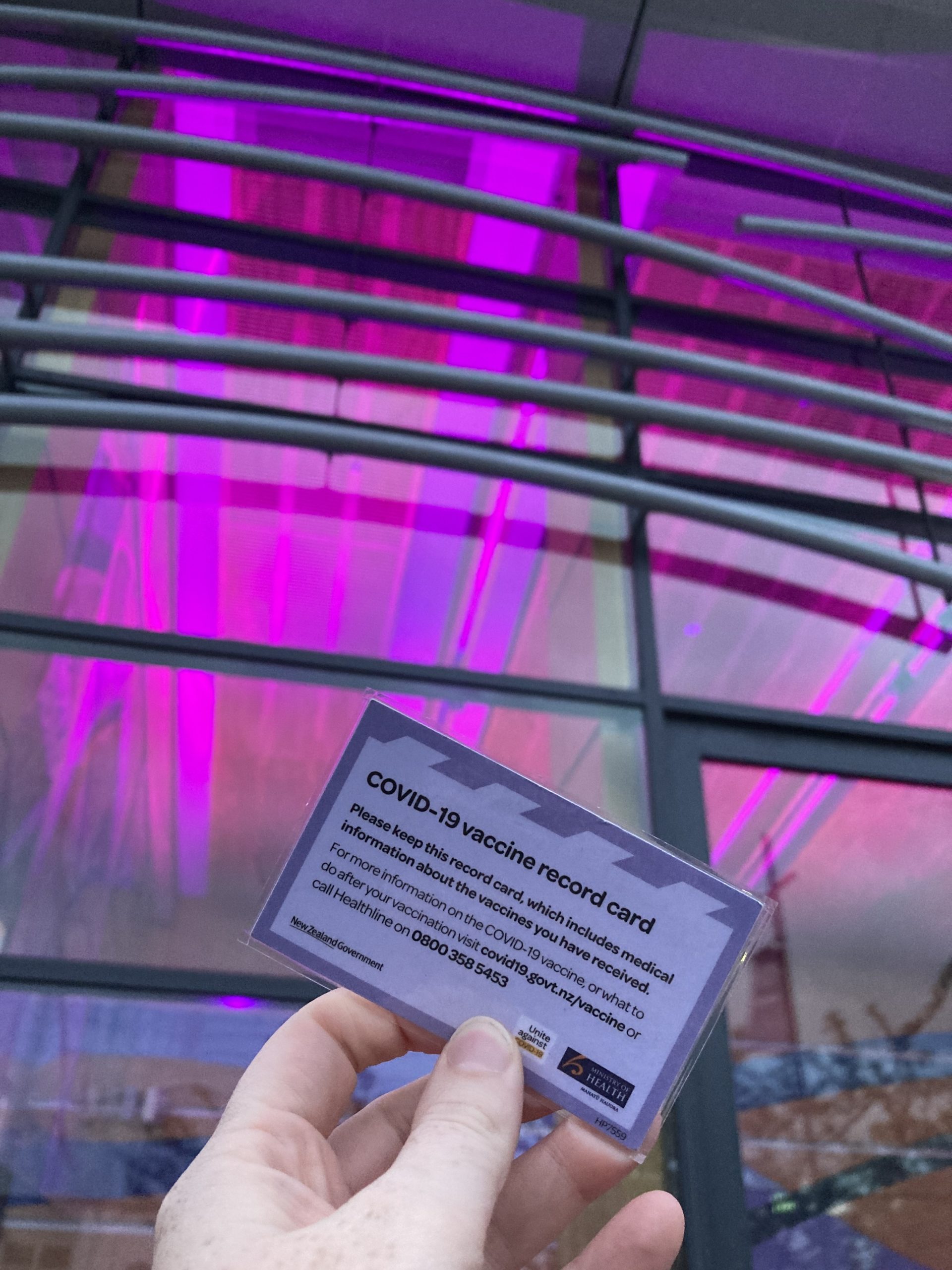
Vaccinated - World Polio Day Carterton Events Centre
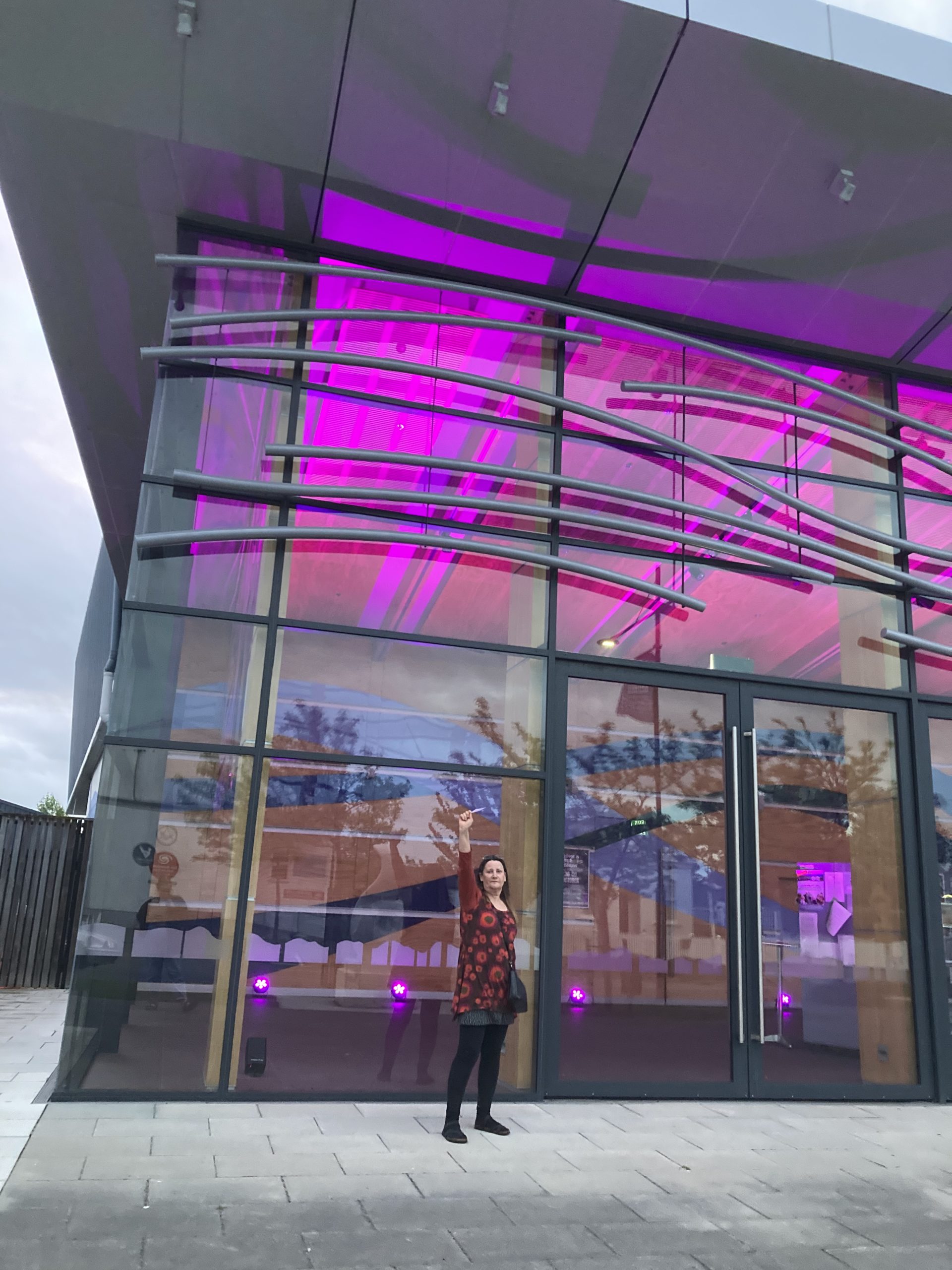
Vaccinated - World Polio Day Carterton Annetta Sutton
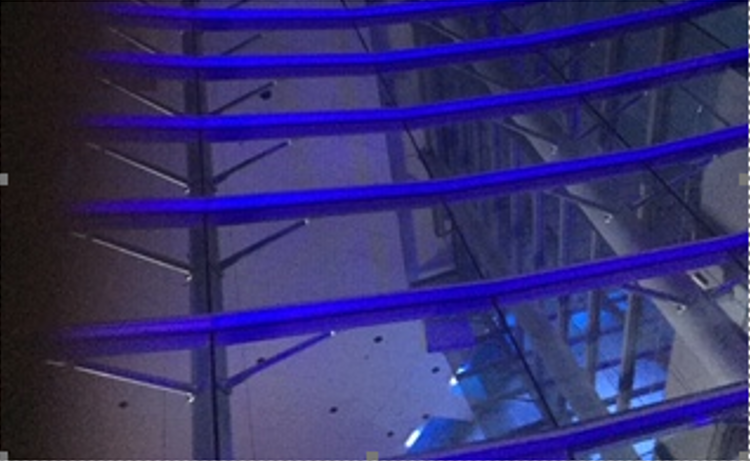
Christchurch Art Gallery
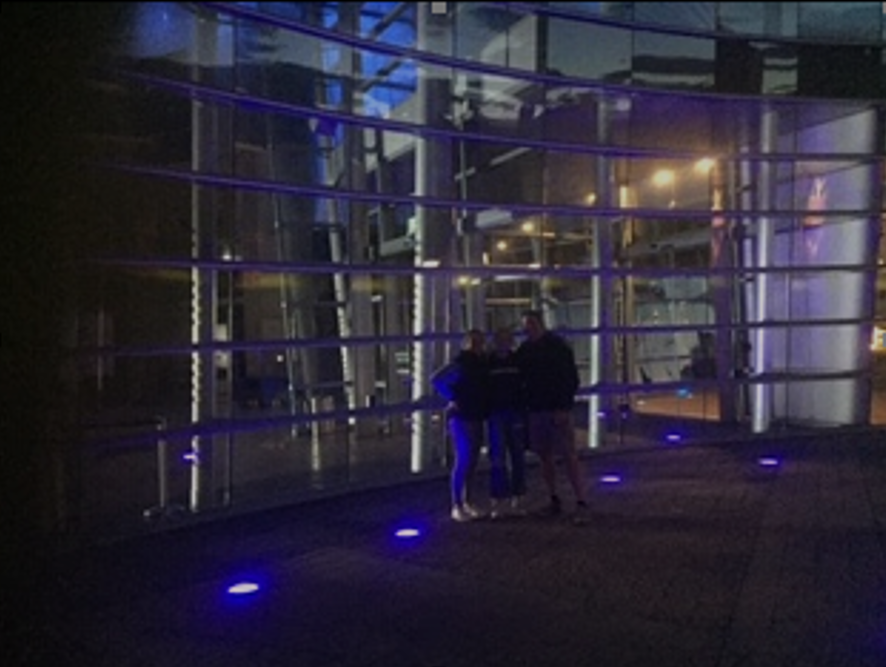
Christchurch Art Gallery
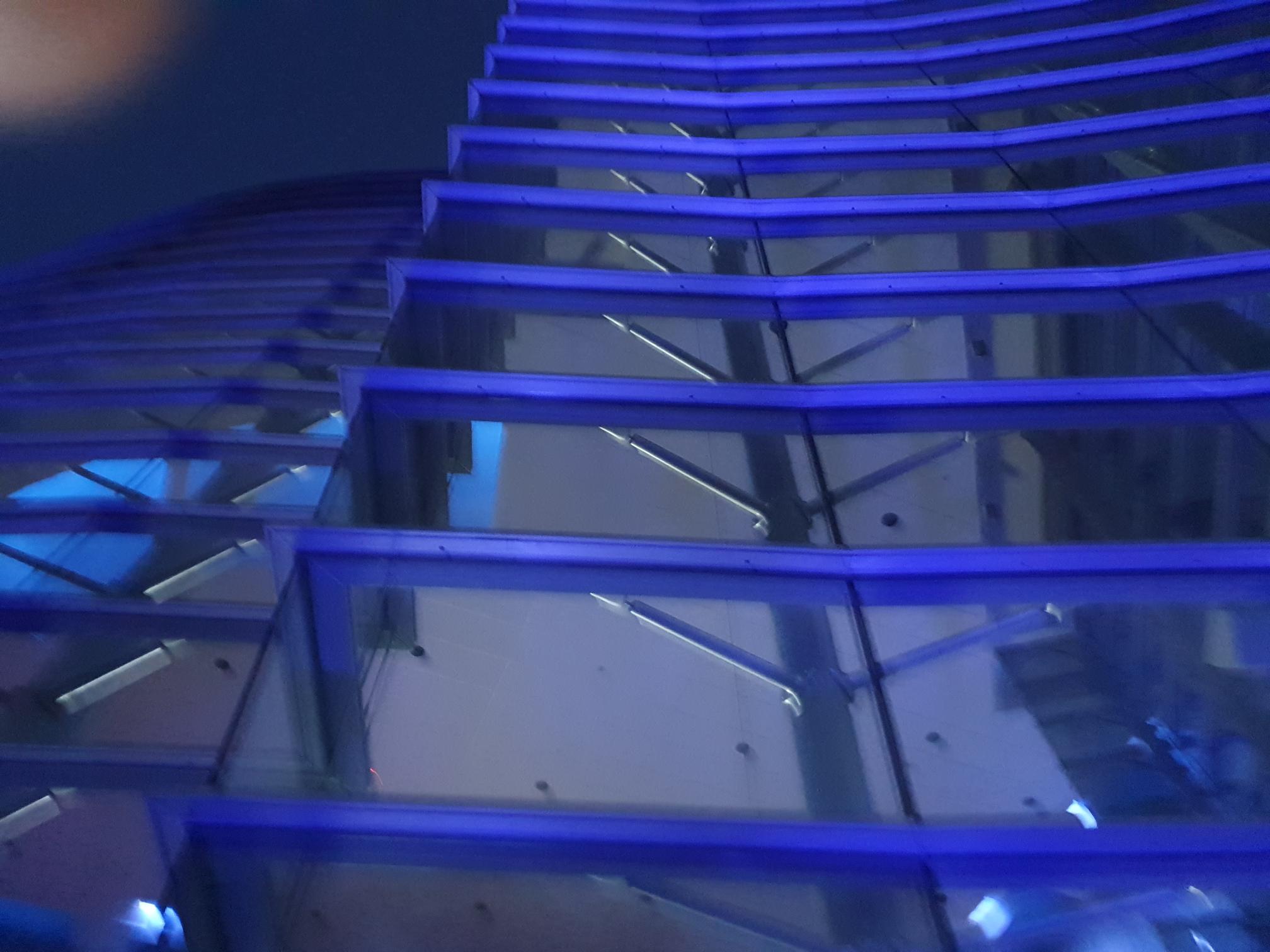
Christchurch Art Gallery
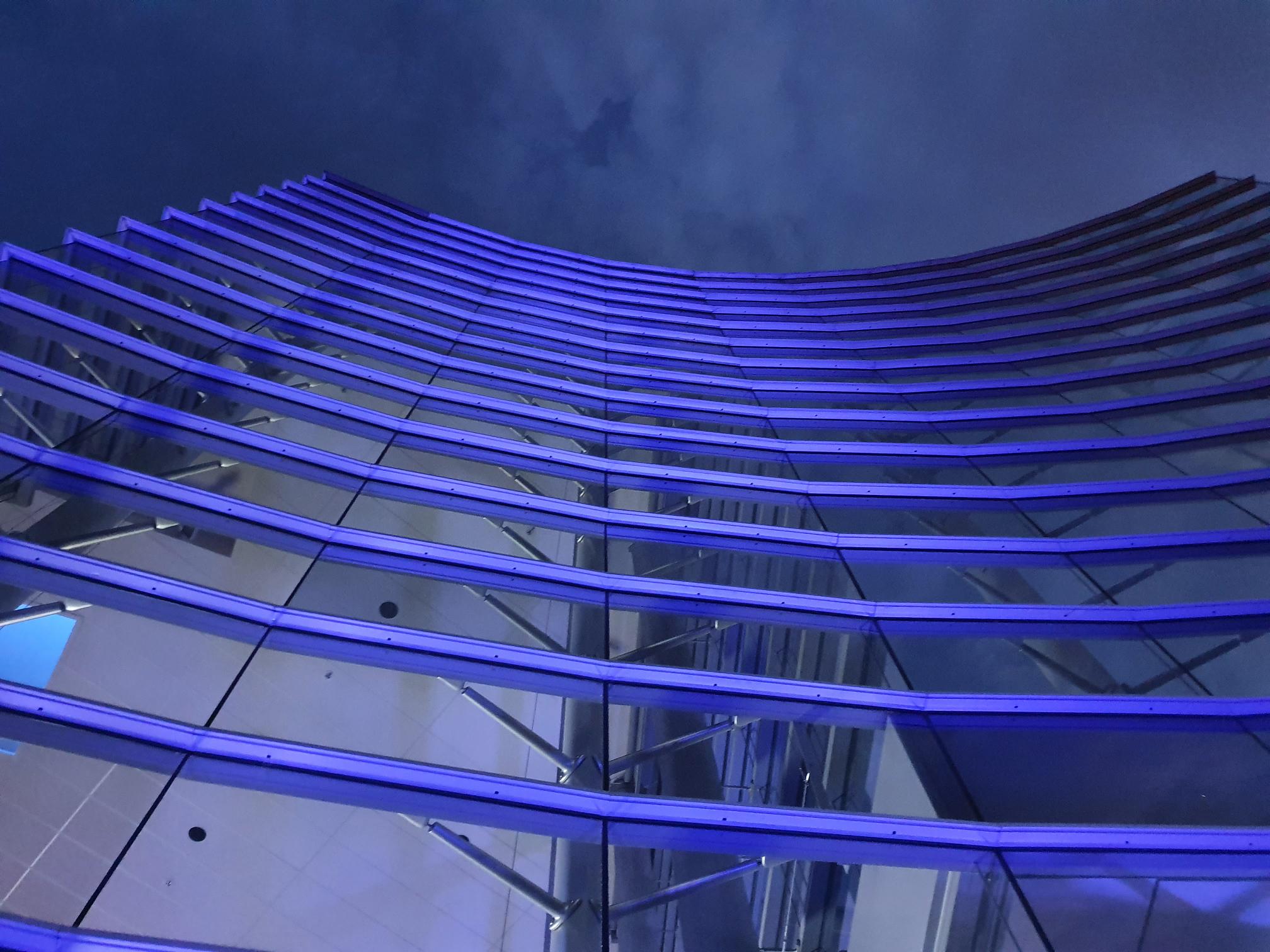
Christchurch Art Gallery
